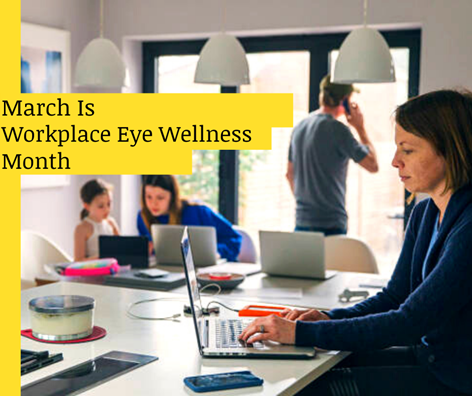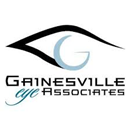Posted by: North Georgia Eye Associates in Blog


Prevent Blindness, the oldest eye health and safety nonprofit organization has declared March as Workplace Eye Wellness Month. This year many people have increased their digital screen time for many remote employees. Prevent Blindness is raising awareness this year about digital eye strain and providing tips on decreasing the effects of increased screen time.
Symptoms of digital eye strain, also referred to as computer vision syndrome, include tired, burning, or itching eyes, dry eyes, blurred vision, or headache. To help reduce the effects, Prevent Blindness recommends:
- Place your screen 20 to 26 inches away from your eyes and a little bit below eye level.
- Use a document holder placed next to your screen. It should be close enough, so you don’t have to swing your head back and forth or constantly change your eye focus.
- Change your lighting to lower glare and harsh reflections. Glare filters over your digital screens can also help.
- Get a chair you can adjust.
- Choose screens that can tilt and swivel. A keyboard that you can adjust is also helpful.
- Computer glasses with yellow-tinted lenses that block blue light can help ease digital eye strain by increasing contrast.
- Anti-reflective lenses reduce glare and increase contrast and also block blue light from digital devices.
- Take frequent breaks using the “20-20-20” rule, as recommended by the American Academy of Ophthalmology and the American Optometric Association. Every 20 minutes, look away from your screen and look at an object 20 feet away for at least 20 seconds. This technique gives your eyes a chance to reset and replenish themselves.
For those who work in other settings, such as construction or manufacturing, Prevent Blindness also provides information on the importance of eye protection. According to the Centers for Disease Control and Prevention (CDC), each day, approximately 2,000 U.S. workers sustain a job-related eye injury that requires medical treatment. About one-third of these injuries are treated in hospital emergency departments, and more than 100 results in one or more days away from work.
Eye and face protection must be used to protect against chemical, environmental, radiological, or mechanical irritants, and hazards.
Safety eyewear protection includes:
- Non-prescription and prescription safety glasses
- Goggles
- Face shields
- Welding helmets
- Full-face respirators
Although it is Workplace Eye Wellness Month, we don’t want to miss the opportunity to discuss eye wellness with our retired patients. Your workplace environment may have changed to a homebound climate, but there are still tips for you for an eye-safe home. There are over a million eye injuries a year.
Here are a few quick eye safety tips at home:
- Use protective eyewear. Always wear safety glasses or goggles when working with chemicals or other materials
- Clear the lawn. Before you mow or use a weed eater, clean up any items that could be flung around at dangerous speeds if the blades catch them.
- Minimize trip hazards. Secure any rugs and make sure to equip stairways with proper railings and lighting.
- Don’t touch your eyes! Particularly while using cleaners (but it’s a good idea any time), avoid touching your eyes and wash them often.
A healthy vision is vital for productive work and quality of life. Make your eyes a priority TODAY to help maintain a healthy eyesight.

770-532-4444